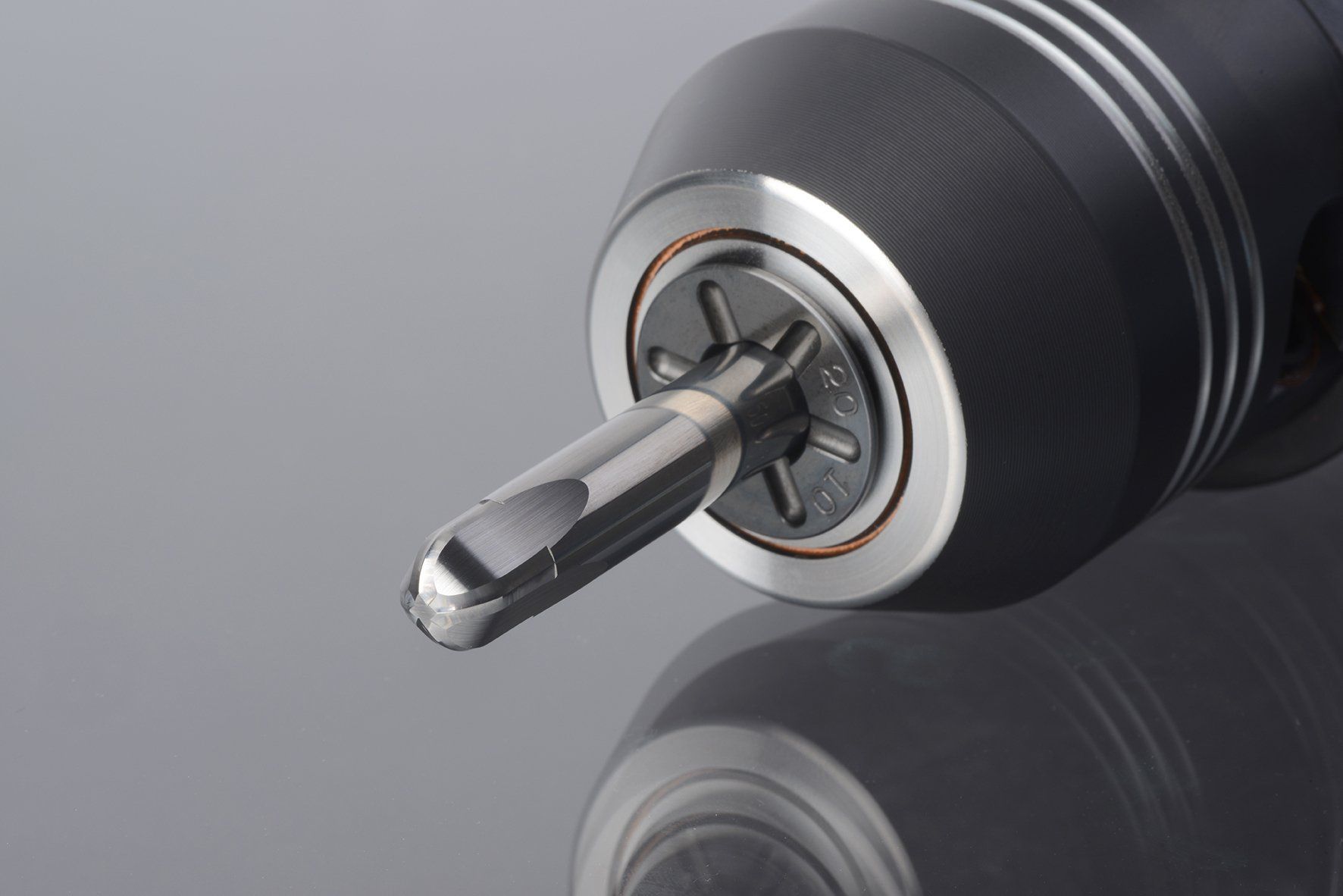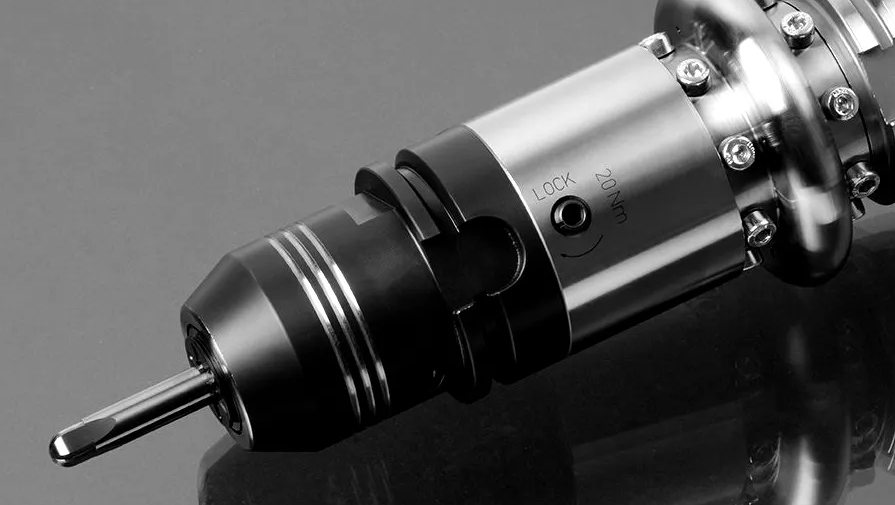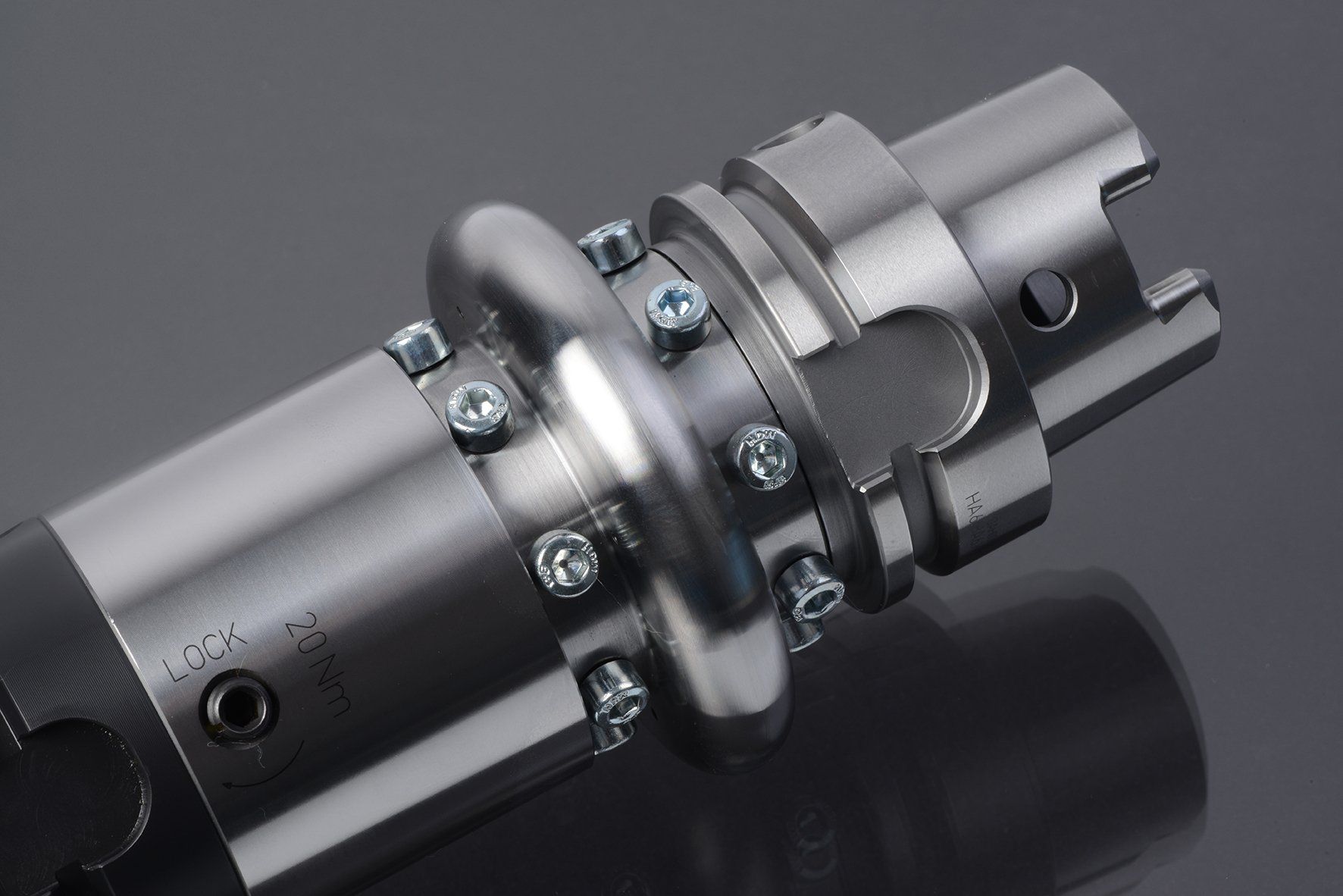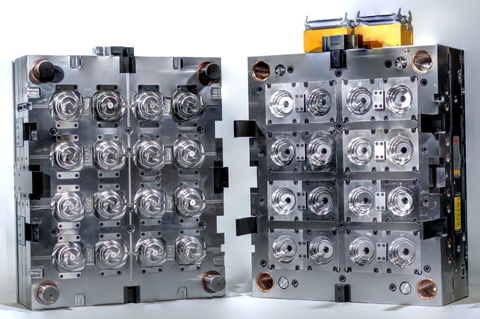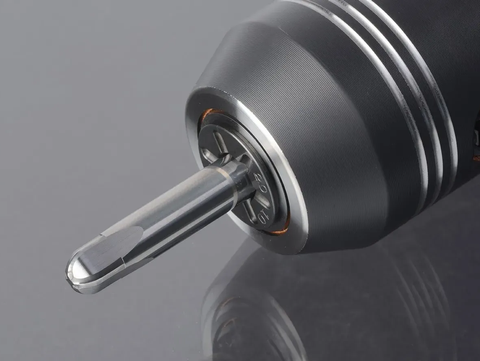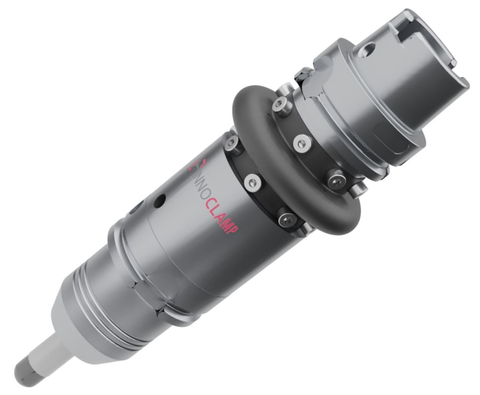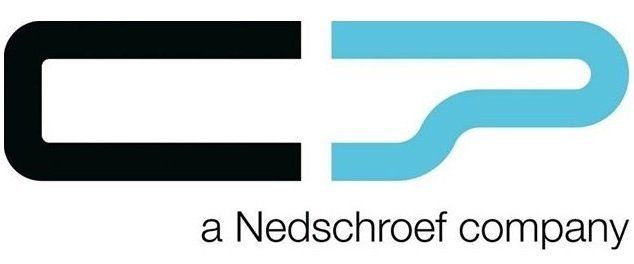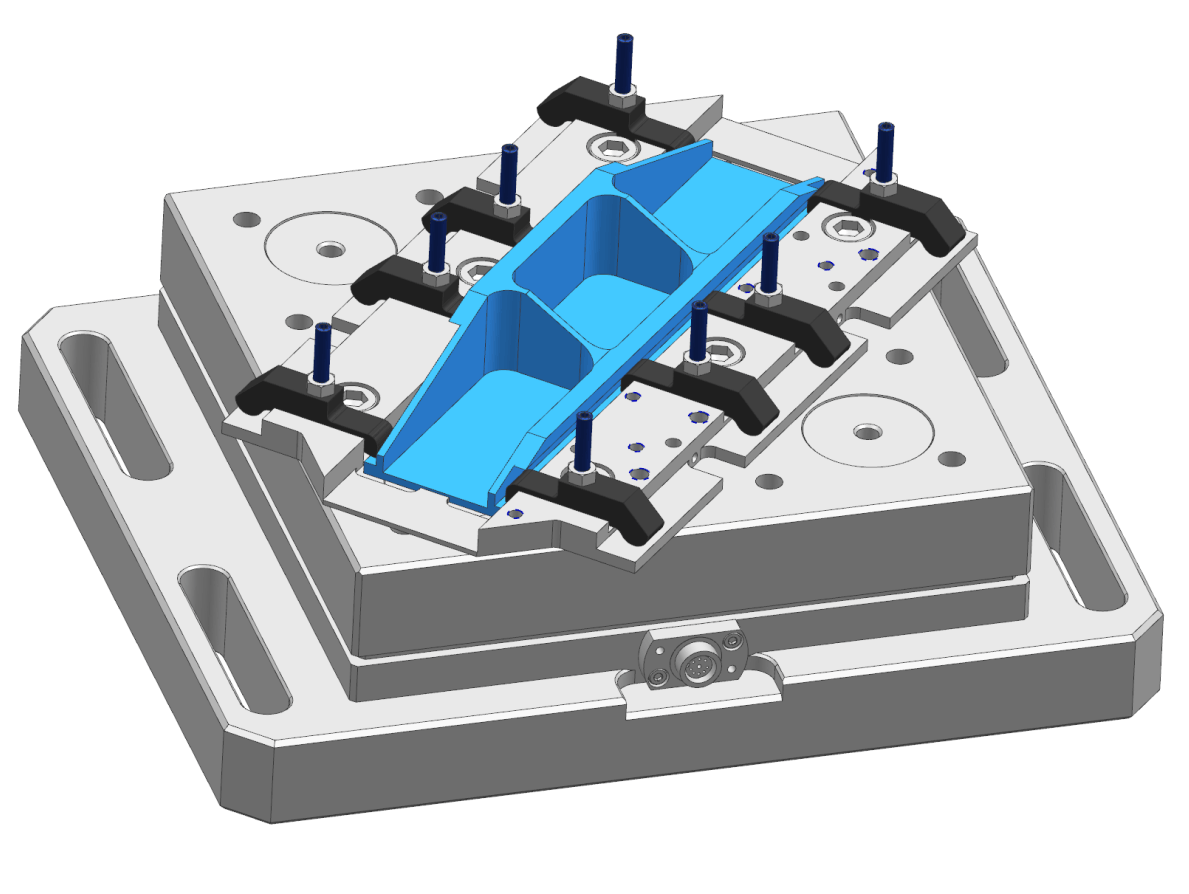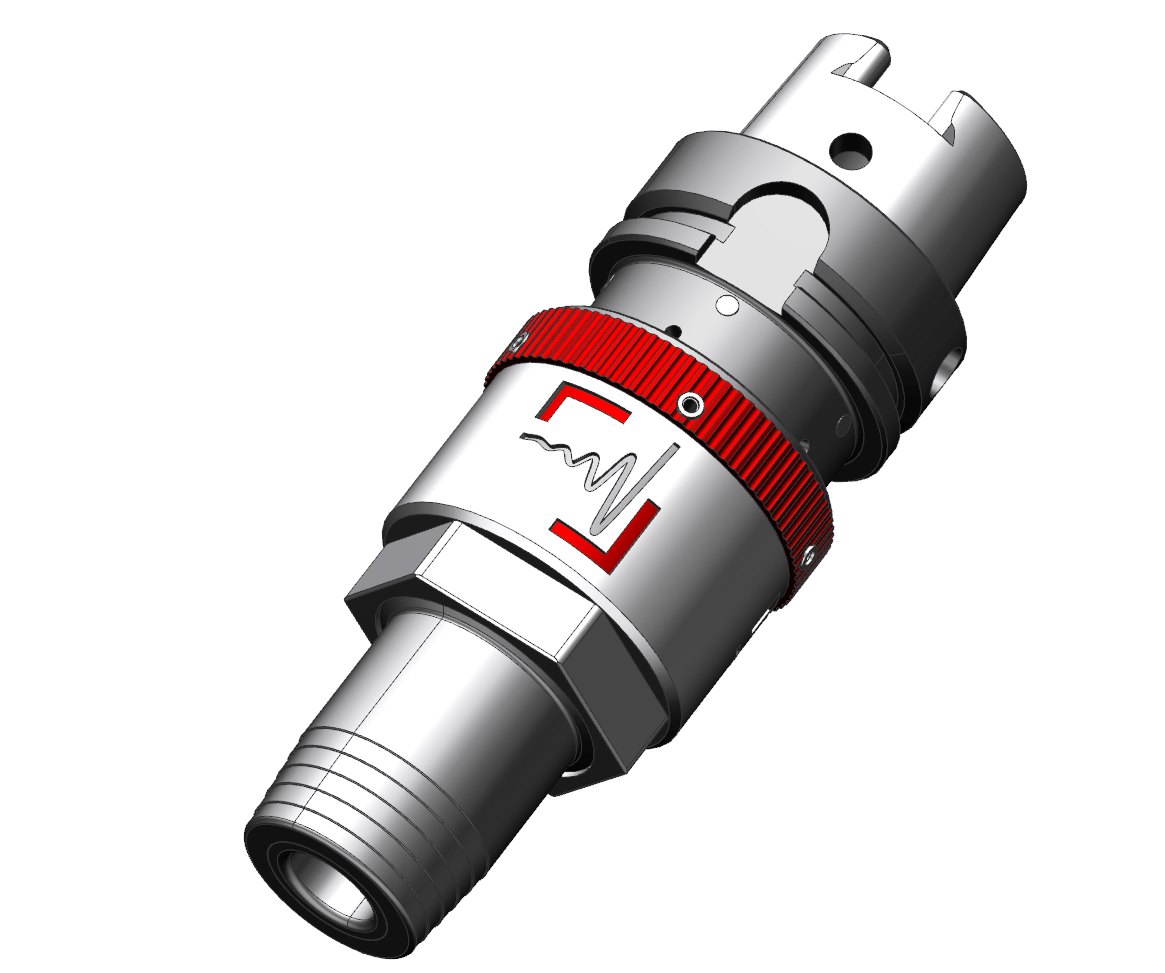Challenge from industrial production
For manufacturing companies, a high surface quality is of great importance, for example for injection moulding tools or for end products with optical properties. Since such surfaces cannot be produced exclusively by milling or erosion processes, a downstream process step is necessary. Up to now, time-consuming and costly manufacturing processes such as manual polishing or mechanical surface hammering have generally been used for finishing.
Solution path in the research project
In the HgroKa research project, we are working with our project partners to develop a tool clamping system for the post-processing of surfaces that offers high flexibility and low manufacturing costs. For this purpose, the tool clamping system presses a carbide tool with a large cutting edge radius onto the workpiece during the machining process. Through the pressing process roughness peaks on the workpiece are flattened and the edge zone of the workpiece material hardens.
The tool clamping system HgroKa
The flexible tool clamping system HgroKa allows the infeed during the machining process while maintaining a constant force between tool and workpiece. The system consists of a tool and a compliant tool clamping system, which in combination in a pressing process produce consistent surfaces. Furthermore, the wear of the carbide tool is reduced by a modified tool micro-geometry as well as by a specific coating of the tool. The tool clamping system can be used automatically and without additional machine aggregates in conventional 5-axis machines and is therefore cost-effective.




